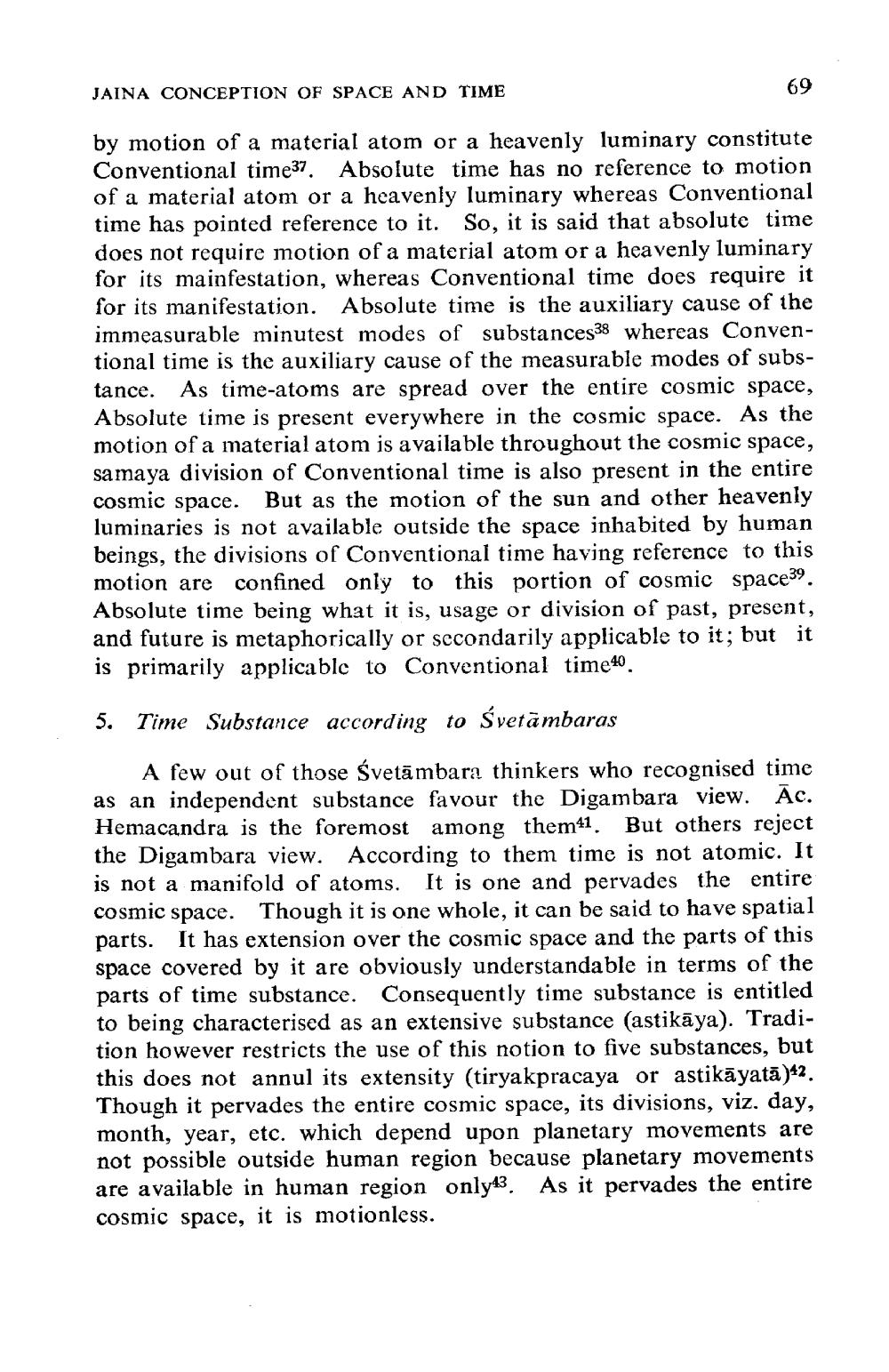________________
JAINA CONCEPTION OF SPACE AND TIME
69
by motion of a material atom or a heavenly luminary constitute Conventional time37. Absolute time has no reference to motion of a material atom or a heavenly luminary whereas Conventional time has pointed reference to it. So, it is said that absolute time does not require motion of a material atom or a heavenly luminary for its mainfestation, whereas Conventional time does require it for its manifestation. Absolute time is the auxiliary cause of the immeasurable minutest modes of substances38 whereas Conventional time is the auxiliary cause of the measurable modes of substance. As time-atoms are spread over the entire cosmic space, Absolute time is present everywhere in the cosmic space. As the motion of a material atom is available throughout the cosmic space, samaya division of Conventional time is also present in the entire cosmic space. But as the motion of the sun and other heavenly luminaries is not available outside the space inhabited by human beings, the divisions of Conventional time having reference to this motion are confined only to this portion of cosmic space39. Absolute time being what it is, usage or division of past, present, and future is metaphorically or secondarily applicable to it; but it is primarily applicable to Conventional time40.
5. Time Substance according to Śvetāmbaras
A few out of those Śvetāmbara thinkers who recognised time as an independent substance favour the Digambara view. ĀC. Hemacandra is the foremost among them41. But others reject the Digambara view. According to them time is not atomic. It is not a manifold of atoms. It is one and pervades the entire cosmic space. Though it is one whole, it can be said to have spatial parts. It has extension over the cosmic space and the parts of this space covered by it are obviously understandable in terms of the parts of time substance. Consequently time substance is entitled to being characterised as an extensive substance (astikāya). Tradition however restricts the use of this notion to five substances, but this does not annul its extensity (tiryakpracaya or astikāyatā)42.
Though it pervades the entire cosmic space, its divisions, viz. day, month, year, etc. which depend upon planetary movements are not possible outside human region because planetary movements are available in human region only43. As it pervades the entire cosmic space, it is motionless.




